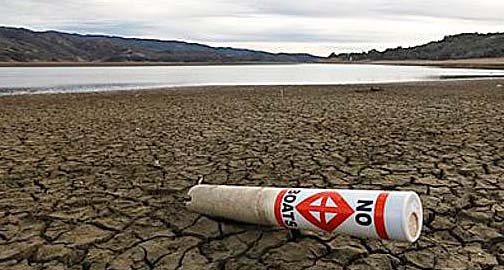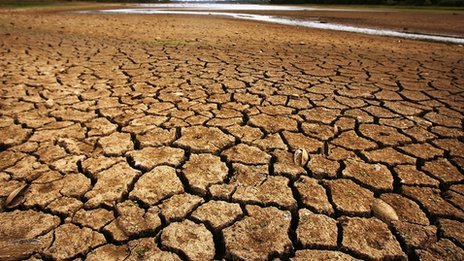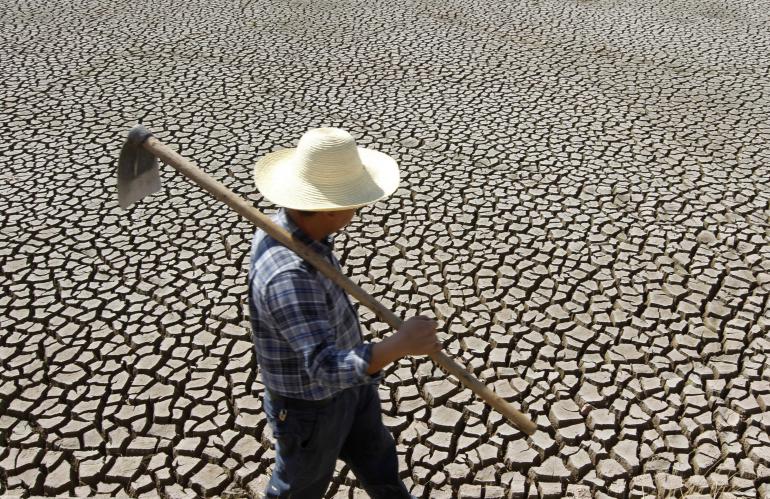Groundwater Farming: a Blessing or a Curse?
By Michael Kuhne, AccuWeather.com
Mining groundwater for agricultural use in the San Joaquin Valley has not only created one of the most productive agricultural regions in the United States, but it has also simultaneously altered the surface of the land causing noticeable subsidence or sinking in the region, according to the U.S. Geological Survey.
“The maximum subsidence, near Mendota, was more than 28 feet,” USGS reported, citing a 1970 comprehensive survey.
Overall subsidence has slowed since the 1970s due to reductions in the pumping and recovery of groundwater, as well as the use of other types of surface water irrigation.
“At least some of the groundwater is stored in between clay deposits and within clay deposits,” AccuWeather.com Senior Meteorologist Ken Clark said. “When you extract the water, you take out the water surrounding (the) clay molecules, and this then allows the clay to compress. The more water you take out, the more compacting you have, and when that happens, the valley sinks.”
In the photo above, taken Tuesday, Feb. 4, 2014, a warning buoy sits on the dry, cracked bed of Lake Mendocino near Ukiah, Calif. Despite recent rains, the reservoir is currently only about 41 percent full. (AP Photo/Rich Pedroncelli)
According to U.S. Department of Agriculture National Agricultural Statistics Service Pacific Region Office Deputy Director Dave DeWalt, nearly 11.3 percent of the total value of U.S. agriculture commodities comes from California’s prime agricultural region.
“So far (in 2014) we’ve only seen about one-third of the precipitation we normally would have,” DeWalt said, referring to the Sacramento area.
With the drought continuing, food prices will spike.
“It is some of the richest farmland in the U.S.,” Clark said. “There is talk that some commodities may not be feasible as they take a lot of water to grow. Such as almonds, a huge cash crop. It takes one gallon of water to make one almond.”
According to Fresno State University Center for Irrigation Technology Consultant Sergeant Green, understanding the utilization of groundwater and the impacts on the Valley is not as simple as it seems.
“Water, crops and productivity are all dynamic,” Green said.
The current crops using the most water in the region are almonds and alfalfa, he said.
“Almonds are a critical export that helps with balance of trade, and alfalfa is critical for the dairy industry which is a huge part of the agriculture economy in the Valley,” Green said. “The three top agricultural commodities are almonds, grapes and dairy products.”
The San Joaquin Valley is part of the Central Valley of California, includes the Sacramento Valley and the Sacramento-San Joaquin Delta. This area produces about a quarter of the nation’s table food on only 1 percent of the country’s farmland, USGS reports.
 The map above shows the impact of drought on California’s farms, forests and wild lands. (Credit: NASA Earth Observatory)
The map above shows the impact of drought on California’s farms, forests and wild lands. (Credit: NASA Earth Observatory)
“Groundwater in the north of the Valley is relatively stable, the south Valley (Fresno south to Bakersfield) has declined consistently,” Green said. “Old pre-1960s subsidence stopped until surface water supplies from the Bay-Delta were cut back starting in the mid-’90s.”
According to the USGS, land subsidence in the Valley was first recorded in 1945 by Engineering Consultant I.H. Althouse.
“The history of land subsidence in the San Joaquin Valley is integrally linked to the development of agriculture and the availability of water for irrigation,” the USGS reported. “Further agricultural development without accompanying subsidence is dependent on the continued availability of surface water, which is subject to uncertainties due to climatic variability and pending regulatory decisions.”
The 10,000-square-mile area making up the Valley floor is comprised of continental sediments and includes fine-grained, stream and lake deposits, which are susceptible to compaction, the USGS reported.
“When farmers and ranchers have to rely on groundwater instead of stored above ground water during extended droughts, more water is being extracted than can be returned,” Clark said. “Once the clay is compacted, there is no way to ‘unpack’ it.”
According to AccuWeather.com Meteorologist Randy Adkins Jr., California has received less than their average rainfall for several years consecutively.
“It’s been a multi-year drought,” he said.
AccuWeather.com Meteorologist Jim Andrews said the last three winter rainy seasons (October to April) were drier than normal, the last winter being driest of the three. Cumulative rainfall (including melted snow) is as little as one half of normal amount for the three rainy seasons collectively, Andrews said.
“Fresno has only seen 55 percent of their normal for those three seasons,” he said. “That’s around 16 inches of rain less than normal.”
Andrews added that the Sacramento region has been doused with only 68 percent of their normal rainfall of 54.5 inches.
Green said rainfall is not adequate to recharge the groundwater, adding it needs to be stored, applied or recharged in specific areas that allow the capability to add more water than what is being extracted at those locations.
In addition, new developments in irrigation are being utilized currently, but the amount of water needed will continue to be based on what crops are in demand, Green said.
“Precision irrigation systems are now widespread and continuing to increase rapidly, but don’t always mean less water is used,” he said. “Crop requirements determine total demand, and permanent crops such as almonds have been increasing for some time.”

























